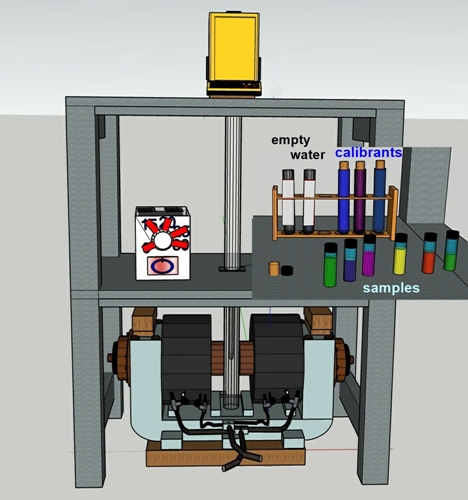
move the mouse around the model to identify the components
| W1 | W2 | W3 | W4 | W5 | W6 | W7 | Finished |
| ❌ | ❌ | ❌ | ❌ | ❌ | ❌ | ❌ | ❌ |
W1-weight of the empty tube - magnet OFF= W1
W2-weight of the empty tube - magnet ON= W2
W3-weight of the tube with water- magnet OFF= W3
Calibrant used calibrant
W4-weight of the tube and calibrant - magnet OFF= W4
W5-weight of the tube and calibrant - magnet ON= W5
Sample used sample
W6-weight of the tube and sample - magnet OFF= W6
W7-weight of the tube and sample - magnet ON= W7
Temperature for ALL measurements was 300K
For the complex being studied, you need to provide the RMM
and the diamagnetic correction value.
Chig (χg) is 0 Magnetic moment (μ) is 0 BM
An alternative page allows you to enter your own values and calculate the magnetic moment.
The rotatable model designed by Craig Walters and Dominique Lyew in 2008 for the virtual world "Wonderland" allows for an all-around view of the Gouy Balance